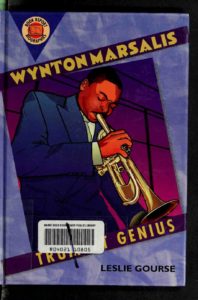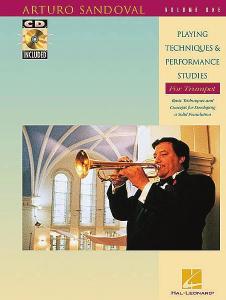Table of Contents
Come join us now, and enjoy playing your beloved music and browse through great scores of every level and styles!
Can’t find the songbook you’re looking for? Please, email us at: sheetmusiclibrarypdf@gmail.com We’d like to help you!
Remembering Woody Shaw, born on this in 1944 (1944-1989).

Best Sheet Music download from our Library.
Born in Laurinburg, Woody Shaw’s childhood (December 24, 1944, Laurinburg, North Carolina – May 10, 1989, Manhattan, New York), was spent in Newark, New Jersey, where he began playing the pistonless cornet. the age of 9 years. Two years later, by pure chance, he adopted his definitive instrument, taking trumpet lessons from Jerome Ziering, a teacher to whom Shaw himself attributes a great influence on his early development as a musician. Shaw demonstrated great ability, with absolute pitch and photographic memory, and as a result his teachers enrolled him two grades ahead of his age at Arts High School, an institution where such notable names as those of Wayne Shorter, Sarah Vaughan or Larry Young.
Please, subscribe to our Library.
If you are already a subscriber, please, check our NEW SCORES’ page every month for new sheet music. THANK YOU!
Shaw’s early influences were Louis Armstrong, Fats Navarro, Miles Davis, Kenny Dorhman, Freddie Hubbard, Lee Morgan and, especially, Dizzy Gillespie, with whom Shaw’s father – a gospel singer – had gone to high school. In 1963 he began his professional career recording with Willie Bobo and Eric Dolphy, who, the following year, invited Shaw to accompany him to Paris.
Despite Dolphy’s sudden death, just before the planned trip, Shaw decides to go to the French capital anyway, where he settles with his friend Nathan Davis alongside figures such as Bud Powell, Kenny Clarke and Art Taylor. In such company, the trumpeter frequented London and Berlin, but in 1964 he decided to return to the United States to join the quintet of pianist Horace Silver, with whom he remained during the 1965-66 biennium. During the rest of the decade he worked with Chick Corea (1966-67), Jackie McLean (1967), Booker Ervin (1968), McCoy Tyner (1968), Max Roach (1968-69) and Andrew Hill (1969).
The 70s began with collaborations with Pharoah Sanders, Hank Mobley, Gary Bartz, Archie Shepp and Joe Henderson, who hired him for his quintet in 1970. From 1971 to 1973 he was part of Art Blakey’s famous Jazz Messengers, and After that period he settled in San Francisco to co-lead a project with Bobby Hutcherson. In 1975 he returned to New York with drummer Louis Hayes, with whom he formed a quintet in both their names.
In 1977, Woody Shaw, influenced by Coltrane’s modal music and more classic hard bop, led several groups under his name. In 1978 he signed with Columbia Records to release a series of albums that are now classics. From that year until 1983, Shaw maintained a relatively stable quintet, which included, among others, the trombonist Steve Turre and the pianist Mulgrew Miller, but from that date onwards numerous formations followed one another in the different groups under his name.
During his last years he had been diagnosed with an incurable eye disease that was causing him to progressively lose his vision, which made his professional career difficult. On February 27, 1989, under unclear circumstances, Shaw was hit by a car on the Brooklyn subway, causing significant damage to his left arm. On May 10, 1989, after various complications, he died due to kidney problems.
Woody Shaw was one of the most talented and innovative musicians of his generation, and despite his early and tragic death, he has left a legacy of enormous influence on contemporary jazz. Inspired in equal parts by his classical training, by the modal experiments of John Coltrane and Eric Dolphy in the 1960s, and by the post-bop developments of the same decade, Shaw’s work through the changing decade of the 1970s and the difficult decade of the 80s, has turned out to be the ideal breeding ground where new generations of young lions have emerged who, like Wynton Marsalis, are leading figures in contemporary traditional jazz. Woody Shaw will undoubtedly go down in history as one of the great innovators, leaders and mentors in the history of jazz.

Bob Berg did not have much confidence in moving forward with his career as a musician. Before devoting himself professionally to jazz, he was a taxi driver and truck driver, a profession he practiced in parallel to his first dabbles with the tenor saxophone. At the urging of Michael Brecker, a good friend and colleague, he joined Horace Silver’s orchestra in 1973 and after a brief and fleeting time there, he joined Cedar Walton’s quartet. During those years he began recording under his own name.
The great leap in his career was his collaboration with Miles Davis. That period with the Alton trumpeter was enormously fruitful. His talent exploded and his style, violent, exuberant, vigorous and at the same time delicate and sensitive, fit perfectly with Miles’ genius and attitude. From that period with Cedar Walton and Miles Davis, there remain incomparable contributions to contemporary jazz. This saxophonist who masterfully played the tenor and soprano saxophone, natural heir and disciple of Coltrane, would have been a great musician if it were not for the fact that in a fatal traffic accident that occurred at the end of 2002, he died on the road on December 5 of that year.

Woody Shaw | Time Is Right FULL ALBUM (1983, 2021 remaster)
“The quintet creates the perfect context for Shaw, whose style fits the well-constructed arrangement perfectly. There is harmonic adventure here and shades of Coltrane’s intervallic structure, absorbed into a broader framework of an approach to improvisation that could be lyrical yet edgy, with quirky phrases to keep the listener on their toes.” Stuart Nicholson, from liner notes.
Personnel:
Woody Shaw, Trumpet Steve Turre, Trombone, Haitian Shell Mulgrew Miller, Piano Stafford James, Bass Tony Reedus, Drums .
Treack List:
00:00 From Moment To Moment 12:07 Time Is Right 24:19 You And The Night And The Music 36:39 We’ll Be Together Again Live recording by Gianni Grassilli at Osteria delle Dame, Bologna, January 1, 1983 Remix and digital transfer, Giancarlo Barigozzi Producer, Alberto Alberti Executive producer, Sergio Veschi
Browse in the Library:
Or browse in the categories menus & download the Library Catalog PDF:
